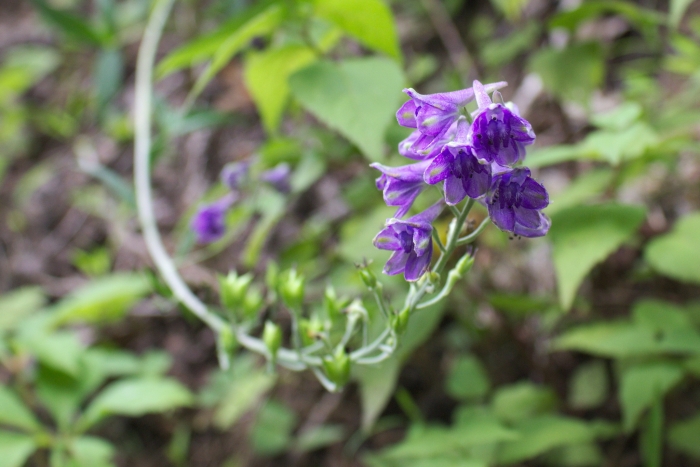Tall Larkspur
(Delphinium exaltatum)
Tall Larkspur (Delphinium exaltatum)
/
/

Daniel McClosky
CC BY 4.0
Image By:
Daniel McClosky
Recorded By:
Copyright:
CC BY 4.0
Copyright Notice:
Photo by: Daniel McClosky | License Type: CC BY 4.0 | License URL: http://creativecommons.org/licenses/by/4.0/ | Rights Holder: Daniel McClosky | Publisher: iNaturalist | Date Created: 2016-08-04T13:23:51-07:00 |

























Estimated Native Range
Summary
Delphinium exaltatum, commonly known as Tall Larkspur, is a perennial herb that is native to the eastern United States, particularly in the Appalachian and Ozark Mountains, as well as in prairies and glades of the central states. It can grow up to 6.6 feet tall and typically blooms between July and September, showcasing spikes of vibrant, deep blue to purple or occasionally white flowers that are highly attractive to pollinators. The flowers are considered showy due to their size and the contrast of their colors against the green foliage.
Tall Larkspur is valued for its vertical accent and striking floral display in wildflower gardens, meadows, and naturalized areas. It prefers partial shade to full sun and requires well-drained soils, especially those that are rich in lime (calcareous). While it is toxic to livestock due to the presence of alkaloids, it is an important nectar source for butterflies and hummingbirds. In cultivation, it is important to protect this plant from strong winds and to provide support for the tall flower spikes. Overly wet soils and high humidity can lead to fungal diseases, which are potential problems for this species. Tall Larkspur is not typically invasive but can be affected by habitat loss and changes in fire regimes in its native range.CC BY-SA 4.0
Tall Larkspur is valued for its vertical accent and striking floral display in wildflower gardens, meadows, and naturalized areas. It prefers partial shade to full sun and requires well-drained soils, especially those that are rich in lime (calcareous). While it is toxic to livestock due to the presence of alkaloids, it is an important nectar source for butterflies and hummingbirds. In cultivation, it is important to protect this plant from strong winds and to provide support for the tall flower spikes. Overly wet soils and high humidity can lead to fungal diseases, which are potential problems for this species. Tall Larkspur is not typically invasive but can be affected by habitat loss and changes in fire regimes in its native range.CC BY-SA 4.0
Plant Description
- Plant Type: Herb
- Height: 4-6 feet
- Width: 1-1.5 feet
- Growth Rate: Moderate
- Flower Color: Blue, Purple, White
- Flowering Season: Summer, Fall
- Leaf Retention: Deciduous
Growth Requirements
- Sun: Full Sun, Part Shade
- Water: Medium
- Drainage: Fast, Medium
Common Uses
Bee Garden, Border Plant, Butterfly Garden
Natural Habitat
Appalachian and Ozark Mountains, prairies, and glades
Other Names
Common Names: Eastern Larkspur, American Larkspur
Scientific Names: , Delphinium exaltatum, Delphidium exaltatum, Delphinastrum exaltatum, Delphinium exaltatum var. typicum, Delphinium lilacinum, Delphinium lilacinum, Delphinium tridactylum, Delphinium urceolatum var. exaltatum,
GBIF Accepted Name: